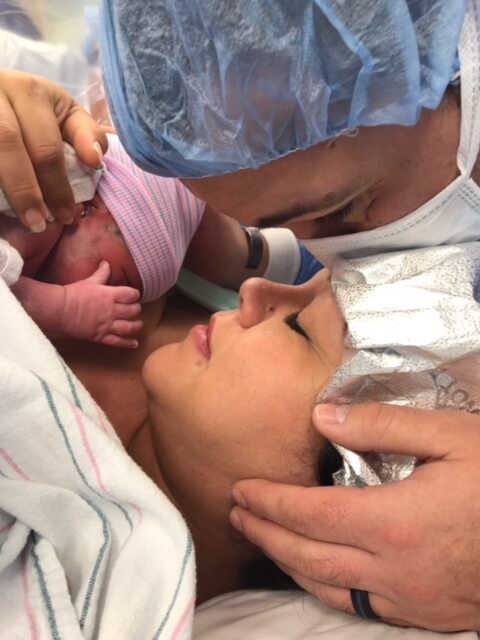
About 3-4 weeks before the due date, most babies will reposition themselves to have their head near the birth canal. If this does not occur, the baby’s feet or buttocks will be next to the birth canal. This is called a breech presentation. Breech presentation occurs in about 3-4% of full-term birth, and a cesarean delivery may be recommended.
Factors that increase the likelihood of breach presentation:
A physical exam can be preformed to determine if the baby is breech presentation. By placing their hands on your abdomen and feeling where the baby’s head, back, and buttocks are, your doctor can tell the position of the baby. An ultrasound can be preformed to confirm the position.
If the fetus is breech, your doctor may recommend external cephalic version (ECV), which is a procedure in which the baby is manually lifted and turned from the outside to increase chances of a vaginal birth.
A health care provider places their hands at certain positions on your abdomen, then lifts and turns the baby.
Usually, ECV is only tried when you are at least 36 weeks pregnant. If the baby is too young, it may reposition itself again.
Your health care professional will consider your health and state of your pregnancy to see if ECV is the right option for you. There are certain conditions that may increase risks associated ECV, in this case an ECV may not be recommended.
More than half of ECV attempts are successful. Sometimes, after an ECV, the baby will move back into a breech presentation, but if this happens an ECV can be tried again. It becomes harder to move the baby closer to the due date, because the baby has grown larger.
Most of the time, if the fetus is determined to be breech, your doctor will plan a cesarean delivery.
There are risks involved with a cesarean delivery, such as:
However, it is not always possible to plan for a cesarean delivery because the baby may move into the breech position right before labor begins.
CANTON
227 Riverstone Drive
Canton, GA 30114
WOODSTOCK
100 Stone Forest Drive, Suite 200
Woodstock, GA 30189